Why you should build a single storey extension
There’s a reason single storey extensions are one of the most popular projects out there. If you’re looking for some reasons to start your own project, consider these important plus points early on.
Get a free quote for your single storey extension
Cost-effective alternative to moving house
One of the main reasons why people choose to make a big change to their living arrangements is space. Whether because your family is growing or because your current situation is getting a bit untenable, the hunt for space can lead you in two different directions - moving or extending.
Moving can be a tempting option, but isn't always the easiest option and definately not the cheapter. Alongside the price of your new property, you’ll also need to budget for…
- Stamp duty
- Valuations and surveys
- Legal fees
- Insurance
- Estate agent fees
- Deposit, mortgage costs and broker fees
And there’s no guarantee that you’ll find a home perfectly suited to your new requirements. In comparison, extending your property allows you to stay in the area you love, create tailored space for your needs, and potentially make a profit, should your extension boost the price of your home.
Brings value to your property
As we touched on above, one of the biggest benefits of extending to the potential of increasing the value of your property. While ceiling prices can hamper these goals in certain areas (we recommend talking to an estate agent on this), for areas where space is at a premium you can get a real return on your investment, which in turn can be utelised to help fund your single storey extension should you capitalise on your home’s equity for funding.
Adapt to the new habits inherited from COVID 19
We asked a lot from our homes during the COVID 19 pandemic, and many struggled to adapt to these new expectations. You may have found yourself longing for…
- A home office
- Playroom
- Gym
- Cinema room
- Home school
- Yoga studio
Whatever your needs, in a new home-centred world, many properties are in need of a makeover. A single-storey extension could be just the solution your family needs to get a modern, adaptable space.
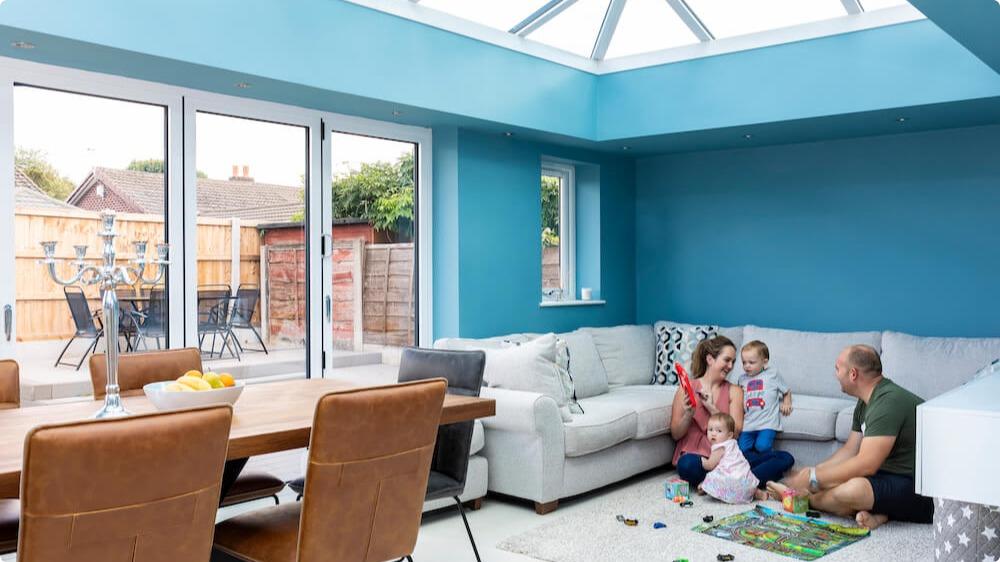
Types of single storey extensions
Single storey extensions are highly versatile and there are plenty of design options available to suit a variety of property types and budgets. Here are some of the most popular that you might consider for your project.
Single storey wraparound extension
A wraparound extension brings together both a rear and side extension into one continuous space. They require more structural work than side and rear extensions, and very rarely come under permitted development rights. However, because you're using space from two directions, wraparound extensions can be a great way of getting lots of extra room without your garden getting gobbled up in the process.
Learn more about single storey wraparound extensions
Single storey bungalow extension
Just because you live in a bungalow doesn’t mean you can’t extend your home. There are plenty of single storey extension options out there for this property type, allowing you to get more space and to modernise. Because bungalows tend to be a little older than other properties, there will be some points to bear in mind in terms of construction, as well as some unique planning hurdles.
Learn more about single storey bungalow extensions
Single storey side extension
If you’re lucky enough to have an alleyway that’s going spare, then it's time to breathe some new life into this dead space with a single storey side extension. This small and mighty single storey extension can help expand your kitchen, help you squeeze a new utility room, or even be used for a downstairs WC - the options are endless! What’s more, they don’t always require a full planning application.
Learn more about single storey side extensions
Single storey rear extension
A rear extension is a classic for a reason. By taking your home out towards the rear, you can add heaps of space and really transform the layout of your ground floor. What’s more, you can add twice the amount of space with a rear extension than you can with other single storey extensions, if you choose to use your permitted development rights - up to 8 metres, in fact!
Learn more about single storey rear extensions
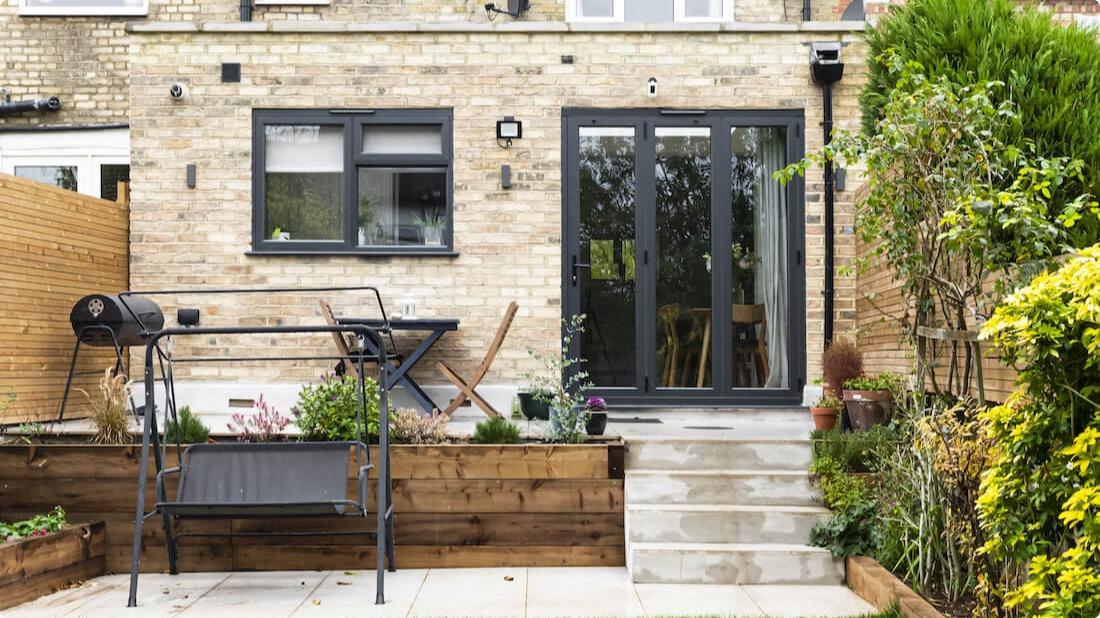
Single storey roof options
Alongside what type of single storey extension you want to pursue, you’ll also need to decide on which roofing best suits the project. Luckily, there are only two options you need to decide between.
Pitched roof single storey extension
Pitch refers to the angle your roof sits at, so a pitched roof single storey extension has a roof which is tilted to some degree. They are typically used to give a more classical look to your extension, and to help it blend in better to period properties. They also tend to provide a better quality of build, as they aren’t as prone to collecting rainwater and the extra height allows for more insulation.
Learn more about pitched roof single storey extensions
Flat roof single storey extension
As the design for flat roof single storey extensions has improved, and helped to eliminate many of their downsides, more and more people are opting for this style of roof. It can help provide a modern look to your facade, and can be quite cost-effective. These benefits might be just enough to help you overlook the extra maintenance work that’s potentially involved with their upkeep.
Learn more about flat roof single storey extensions
Window and door options for single storey extensions
Yes, there’s quite the shopping list when it comes to single storey extensions. Another major consideration will be your glazing. How much glass you choose to incorporate in your window and doors will affect your connection to your garden, how much natural light you enjoy, but also the price tag of your project. Here are some options to think about.
Bi-fold doors
Bi-fold doors have exploded with popularity in the last few years and its not hard to see why. The door is made up of panes of glass, which on their hinges can concertina open. This allows you to enjoy a fully open wall, which can be a challenge for sliding doors to achieve if there isn’t space in the wall cavity for the glass to go. You only need a minimum of three sections, so they can be fitted to entrances both big and small, and can even be used in conjunction with a floating corner.
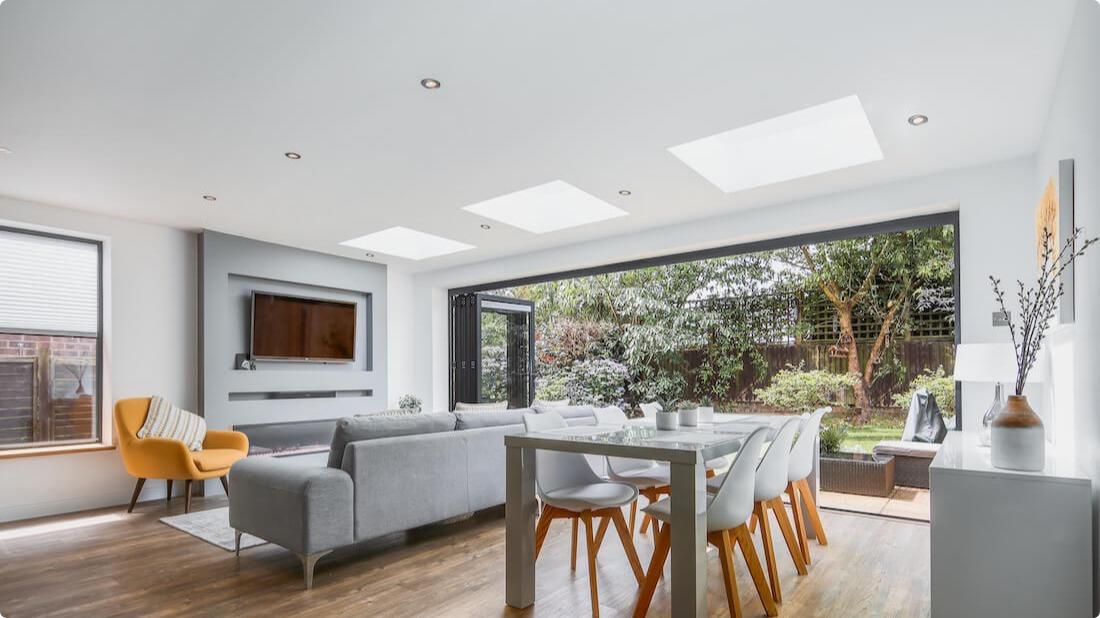
Sliding doors
Sliding doors have been a well-used option for many decades and continue to be very popular. They can be fully glazed, creating large swathes of glass for you to enjoy at the rear of your home. They can also be very space efficient too. While bi-fold doors take up room to the side once folded, sliding doors can slip into the wall cavity, creating what is known as a ‘pocket door’.
Discuss your single storey options with a free consultation
French doors
For those who like a classic touch, there’s nothing better than french doors. While not as expansive as the options listed here, many homeowners choose to add several sets of doors to large walls to create a similar effect and let in large amounts of natural light into your home. If you’re looking to add some retro character into your single storey extension, french doors are an excellent choice.
Feature windows
Alongside your doorway, you might want to create a feature window, for that extra bit of luxury. Our Happy Home research showed that having stunning views of nature does more for a homeowner’s wellbeing, than just having natural light in your space. Therefore, it’s a good investment to make! You could opt for floor to ceiling windows, bay windows, or even oriel window boxes.
Want to know what’s possible with your space? Book a free consultation with our team to get tailored home improvement ideas.
Single storey extension ideas
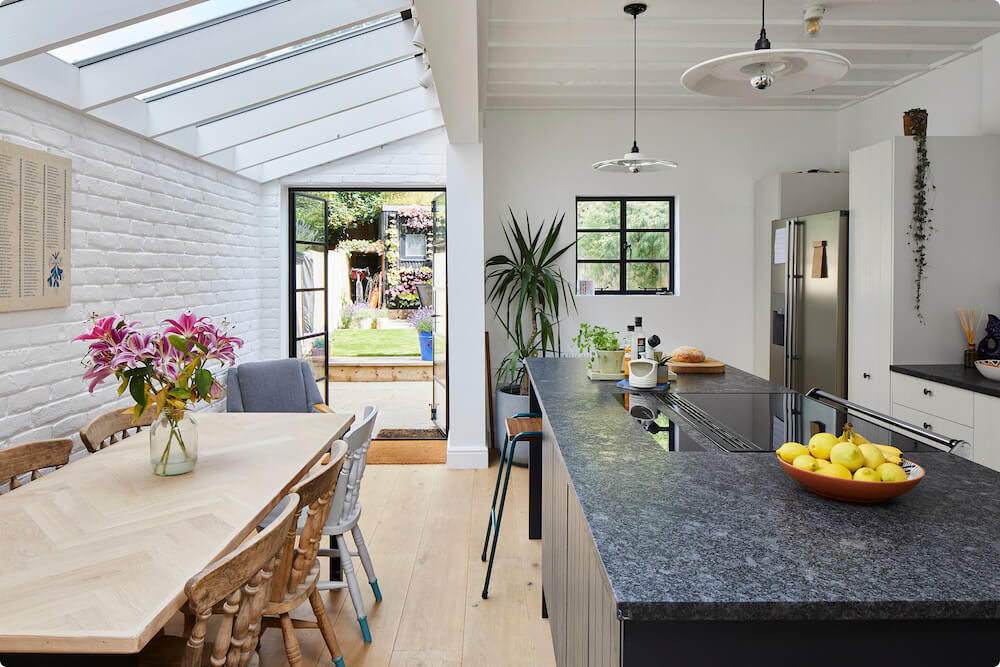
Single storey extensions don’t have to be large and in charge, just take a look at this modest side extension. While keeping the extension confined to the property’s dead alleyway space, it was still enough to create a large open plan kitchen and diner. The family went for a shaker style theme, and used classic french doors to bring light into the space. For an extra boost, we also included a glass ceiling, allowing light to penetrate all the way through.
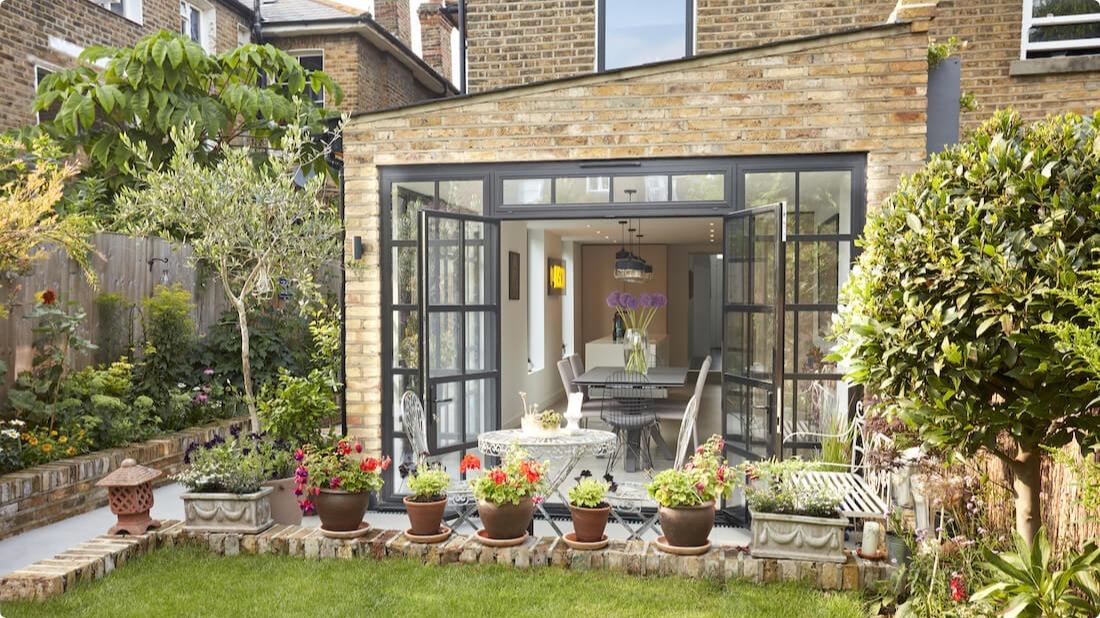
Many people assume wraparounds have to be enormous, but they’re actually a great option for preserving green space. By extending this property a little to the side and a little towards the rear, we were able to provide not only a large open-plan kitchen and dining space, we were also able to keep intact the cute side patio. Our design has combined french doors with Crittall frames for a stylish end result. We also incorporated a brick facade to match the existing exterior and increase the chance of planning success.
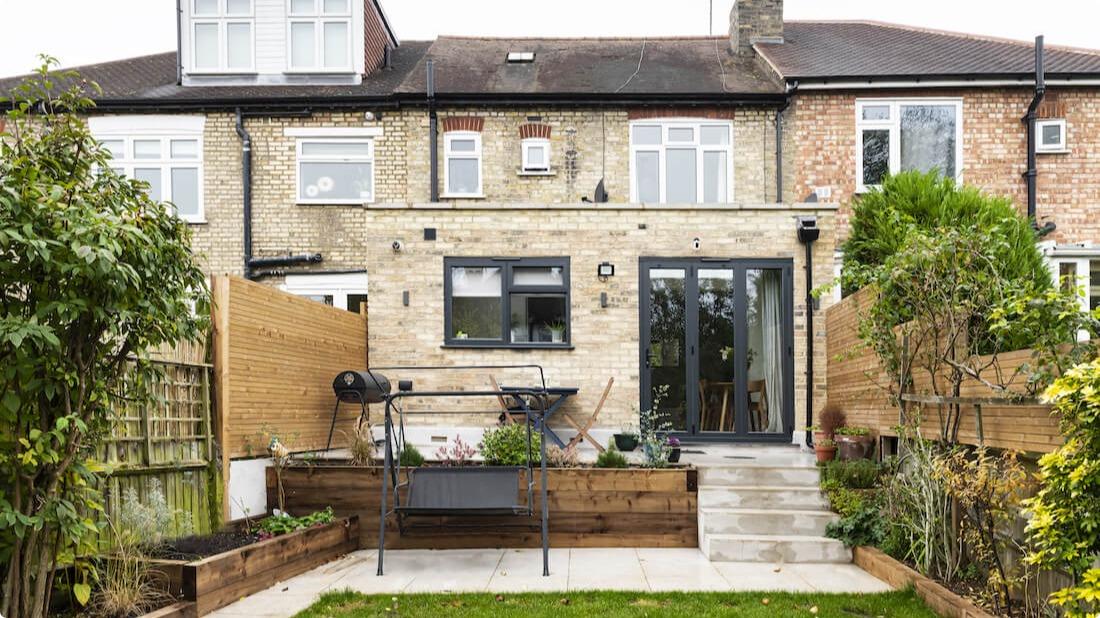
This cute rear extension has been used to provide new practical space for the family. With the room the extension created, we were able to add both a downstairs WC but also a tucked away utility room. This means the charming kitchen/diner isn’t spoiled by any laundry on the floor, and those bulky appliances can also be hidden from sight too. We used a modest set of bi-fold doors to bring light into the space, as well as a large skylight above the key cooking station.
See more single storey extension ideas here.
Love the look of these ideas but think you can’t afford an architect? Watch our video to find out how much an architect could cost you...
Interior design ideas for your ground floor extension
We asked our interior design partners, My Bespoke Room, to share their design ideas for ground floor extensions to inspire you.
One of the best things about a single storey extension is its connection to the outdoors. Whether you’ll be opening onto acres of green or just a small patio, make sure you maximise and take advantage of this in your extension. Blur the lines through simple tricks like using a similar floor type inside and out, or by layering in lots of indoor plants by the back door to give the impression that the garden is flowing into the room!

When choosing paint colours for your new ground floor extension, it’s important to think about the quality of light in the room. If you have a dark north facing room which gets little natural light, consider a dark colour as it will absorb the shadows. Neutral schemes work well in rooms with ample natural light - white paint needs natural light to bring it to life! Without it, it looks flat and dull.
In east and west facing rooms the natural light is much warmer and so it will bring out the yellow and red tones in your paint. To balance this, opt for a white paint with colder undertones like grey or blue.
It’s important to consider how you want to feel in the space in order to decide on the design direction. Will it be a place you and your family spend most of your time in the day? If so, consider keeping it light and bright to make the most of the natural light and keep you feeling energised. Or is it somewhere you’ll entertain guests and host the odd shindig?! If so, use deeper colours and pay a great deal of attention to your artificial lighting plan to create a more intimate and comfortable space for guests to relax and feel at home.
Need an expert pair of eyes to maximise the potential of your new extension? Hiring an interior designer is more affordable than you might think! Book a free chat to discuss your project here.
How much does a single storey extension cost?
The cost of a single storey extension will vary hugely depending on these deciding factors:
- Size
- Complexity
- Materials
- Quality of chosen contractor
- Location in the UK
- Condition of soil and existing building
Because of this, a single storey extension in the UK could cost anywhere between £50,000 - £250,000.
Talk to a member of our team for a free tailored quote.
Learn more about the cost of single storey extensions here
Other important considerations
As with any intensive project, there’s a lot that will go into your end results. Here are just a few other important factors that you’ll need to consider in your single storey extension journey.
Depth of foundations for single storey extensions
Foundations aren’t what most people first think about when it comes to their extension, but it's still a highly important element. It is the base that will carry your entire structure, so if you go wrong here, it can have serious implications for the rest of your home. A big foundation concern will be the depth required for your home. This varies from home to home, and you’ll need to work with an architect to understand fully how your project will tackle this issue.
Learn more: depth of foundations for single storey extension
Do you need planning permission for a single storey extension?
You will need some form of planning documentation for your single storey extension. However, this doesn’t necessarily mean you need to undergo a full planning application. Some single storey extensions fall under your permitted development rights, which means you don’t have to go through a subjective evaluation by the council. You will, however, need to follow strict design guidelines and it usually helps to have an experienced architect there to make sure these requirements are met - otherwise you could land yourself in some hot water with your local enforcement team!
Learn more: planning permission for a single storey extension


























